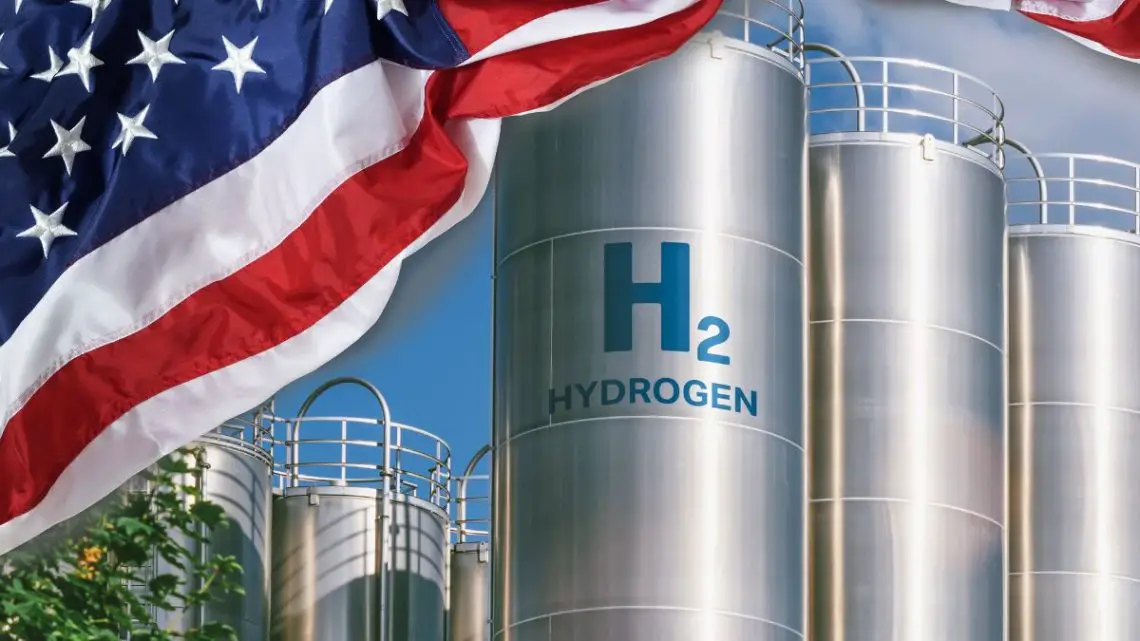
Biden’s Hydrogen Tax Credit Policy Sparks Shifts in Energy Sector
December 23, 2023Yesterday, the Biden administration made a significant move towards a sustainable energy future with the introduction of a new hydrogen tax credit policy and the hydrogen roadmap. This proposal, designed to boost clean hydrogen use and slash carbon emissions, is already causing ripples in unexpected sectors.
Biden’s New Hydrogen Tax Credit Policy: A Sustainable Shift with Potential Fallout for the Nuclear Sector
The stringent guidelines of the new policy aim to incentivize ‘clean’ hydrogen production, which involves renewable energy sources or carbon capture and storage processes. However, this policy shift may also have substantial implications for the nuclear industry. Despite being a low-emission energy source and potential key player in hydrogen production, nuclear power could be excluded as it doesn’t fall under the ‘renewable’ category, which the policy mandates must make up 75% of the energy used in hydrogen production.
Reactions within the nuclear industry have been varied. Some companies are lobbying for nuclear energy’s inclusion in the tax credit, while others are exploring ways to align with renewable technologies to meet the new regulations. The impact of these regulations on the nuclear industry will largely depend on how ‘clean’ hydrogen’s definition evolves and the industry’s ability to adapt to these changes.
Key Takeaways from the Newly Released Information on Tax Credit
- The proposal aims to encourage the production of ‘clean’ hydrogen, produced using renewable energy sources or carbon capture and storage processes.
- The proposed tax credit, known as the 45V, is similar to the existing 45Q tax credit for carbon capture and storage but is specific to hydrogen.
- Companies can receive a tax credit ranging from $.60 to $3 per kilogram of clean hydrogen they produce, depending on whole lifecycle emissions.
- To qualify for the credit, the hydrogen must be produced with less than 2 kilograms of CO2 emissions per kilogram of hydrogen, and at least 75% of the energy used in its production must come from renewable sources.
- The proposal addresses the high electricity demand of clean hydrogen production. Producers must document their electricity usage through “energy attribute certificates,” which will help determine the credits they qualify for.
-
Companies engaged in the production of cleaner hydrogen, which also adhere to the existing wage and registered apprenticeship standards, may be eligible for a significant reward, receiving up to $3 per kilogram of hydrogen.
- However, firms that produce hydrogen using fossil fuels would receive less.
The Unexpected Beneficiaries
Beyond its primary target of promoting clean hydrogen production, the hydrogen tax credit could potentially benefit a broad spectrum of unexpected sectors. Anticipated growth in hydrogen demand could stimulate industries involved in hydrogen storage and transportation, fostering innovation in related fields such as fuel cell development and advanced materials science.
For instance, the surge in hydrogen production will necessitate improved infrastructure for its transport and storage, creating job opportunities in the transportation and logistics sector. The advanced manufacturing industry could also see a boost from growing demand for components like electrolyzers used in hydrogen production. Furthermore, the tax credit could catalyze investment in research and development, particularly in hydrogen-related technologies, benefiting universities and private laboratories.
In conclusion, the Treasury Department’s proposed restrictions on the hydrogen tax credit aim to incentivize the use of new sources of clean electricity. However, the rules have been met with mixed reactions from hydrogen companies. Some argue that they are too stringent and could increase costs due to the need to match hydrogen production with the availability of renewable energy. Others, however, see the rules as an opportunity to drive innovation in the sector, particularly around more flexible electrolyzers.
Despite these challenges, the Biden administration remains committed to increasing clean hydrogen production, setting an ambitious target of 50 million tons by 2050. To achieve this, the Energy Department plans to create hydrogen hubs to connect producers and buyers and initiate programs to stimulate demand and reduce costs.
While the path to achieving these goals will undoubtedly be complex and fraught with challenges, there is a sense of optimism in the industry. As David Turk, the deputy secretary of energy, put it, “There’s a huge opportunity here.” The coming years will reveal how these new rules and initiatives shape the future of clean hydrogen production in the United States.



 HFN News is your leading source for fresh hydrogen and renewable energy updates. Amid the fast-paced growth of hydrogen companies, we provide top-notch news and insights about this exciting sector. Our coverage spans from hydrogen cars to global sustainable initiatives, and we highlight the latest in green jobs and developing hydrogen hubs. We invite you to share your local hydrogen news and explore today’s renewable energy job listings on our site. Thanks for choosing HFN News as your trusted guide to the hydrogen and renewable energy world!
HFN News is your leading source for fresh hydrogen and renewable energy updates. Amid the fast-paced growth of hydrogen companies, we provide top-notch news and insights about this exciting sector. Our coverage spans from hydrogen cars to global sustainable initiatives, and we highlight the latest in green jobs and developing hydrogen hubs. We invite you to share your local hydrogen news and explore today’s renewable energy job listings on our site. Thanks for choosing HFN News as your trusted guide to the hydrogen and renewable energy world!

Well done! Please read my comments in Hydrogen Fuel News regarding the science that will be used to develop hydrogen worldwide. Recent breakthroughs by Northvolt in sodium-ion batteries for grid storage and First Graphene in using a graphene metal oxide as an electrode to split water will provide a cost-effective solution for all nations to complete a needed transformation to hydrogen.
Energy for the world, endless energy, and climate warming solved.